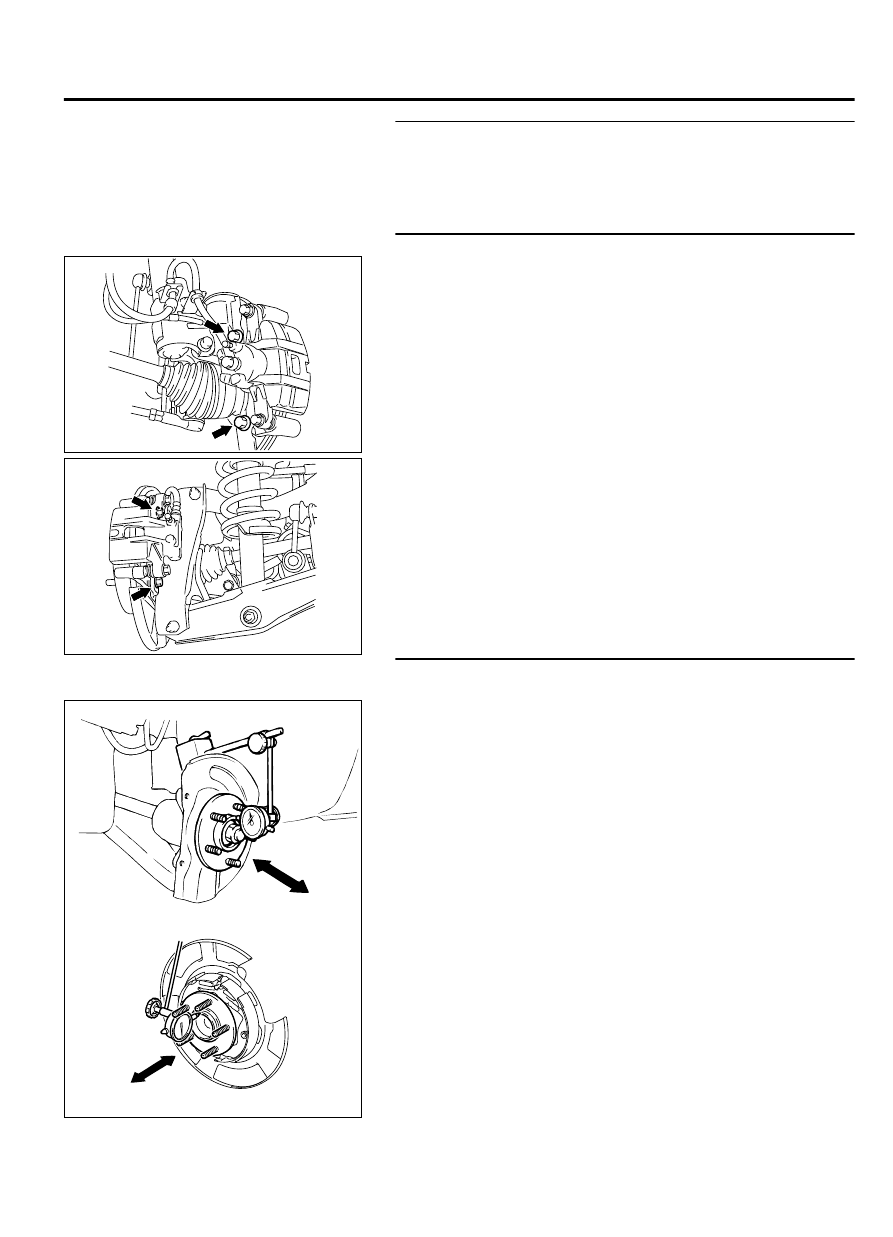Mitsubishi Outlander XL. Manual - part 603

STEP 2. Check for looseness of the wheel nuts.
Q:Are the wheel nuts loose?
YES:
Tighten to 98 ± 10 N·m (73 ± 7 ft-lb). Then go to
Step 5.
NO:
Go to Step 3.
STEP 3. Check for looseness of the caliper installation bolt.
ZC6010140001
<Front>
ZC6010150001
<Rear>
Q:Is the caliper installation bolt loose?
YES:
Tighten to 100 ± 10 N·m (74 ± 7 ft-lb) for the
front caliper. Tighten to 60 ± 5 N·m (45 ± 3 ft-lb) for
the rear caliper. Then go to Step 5.
NO:
Go to Step 4.
STEP 4. Check the wheel bearings for end play.
(1)
Remove the brake discs.
ZC6010220000
<Front>
<Rear>
(2)
Place a dial gauge as shown, and measure the end play while
moving the hub in the axial direction.
Limit: 0.05 mm (0.002 inch)
Q:Does the measured end play exceed the limit?
YES:
Replace the faulty hub assembly. Then go to Step 5.
NO:
Go to Step 5.
BASIC BRAKE SYSTEM
35A-13
BASIC BRAKE SYSTEM DIAGNOSIS